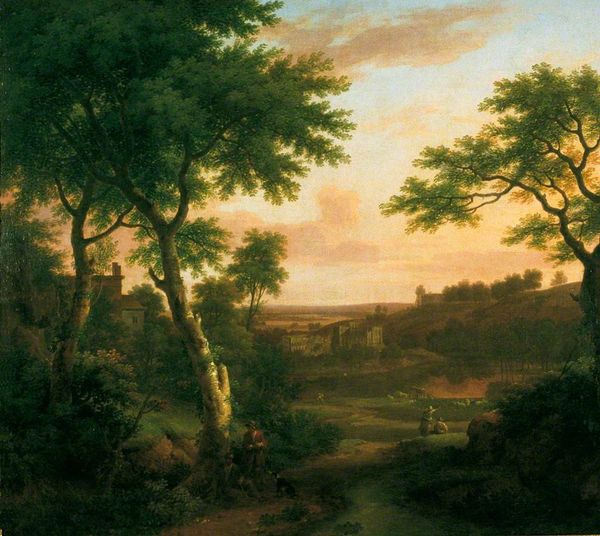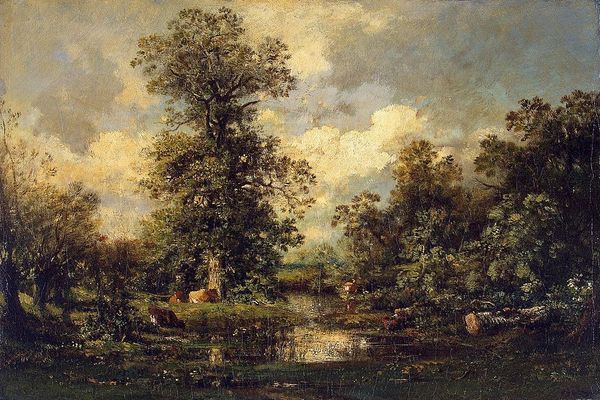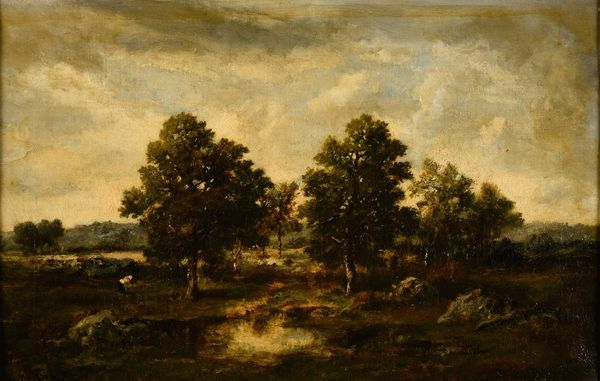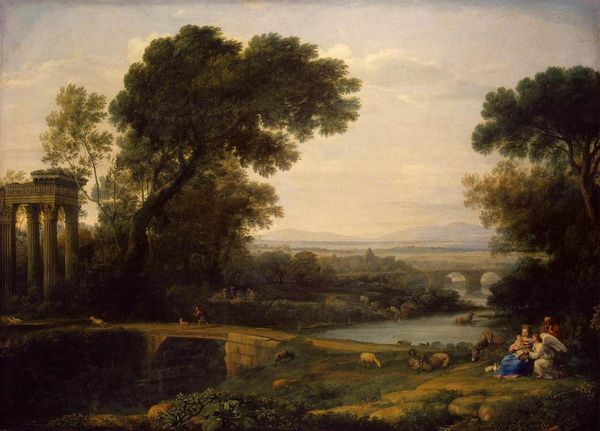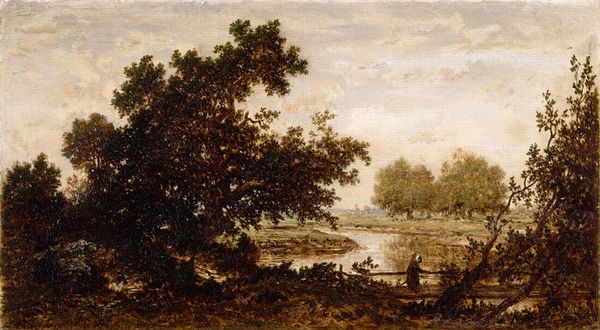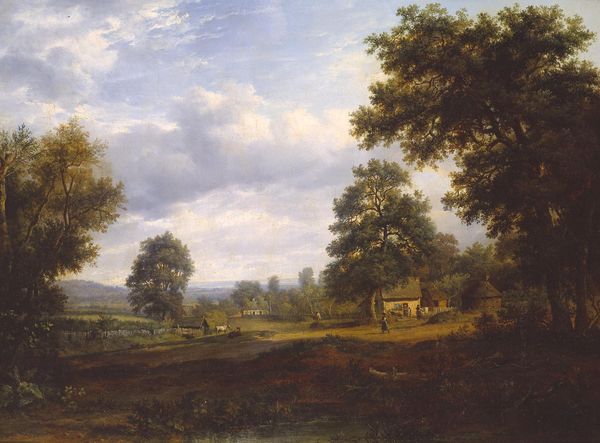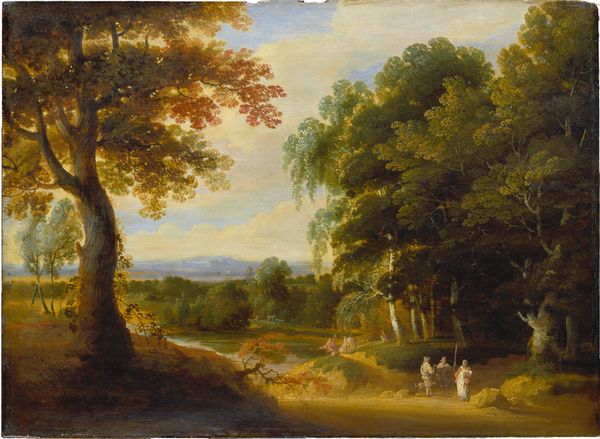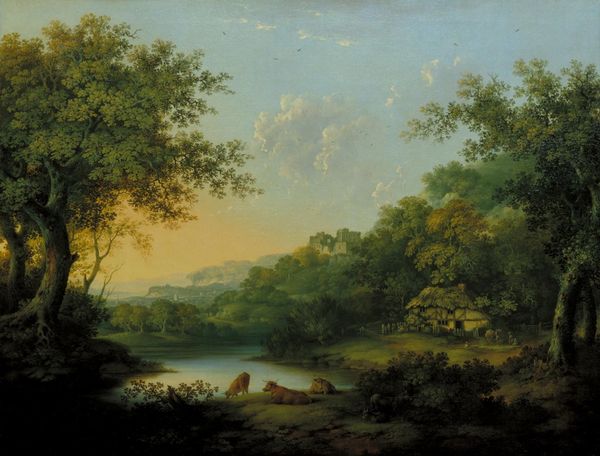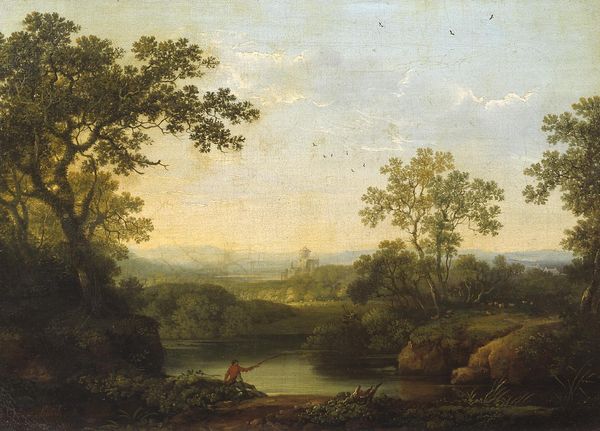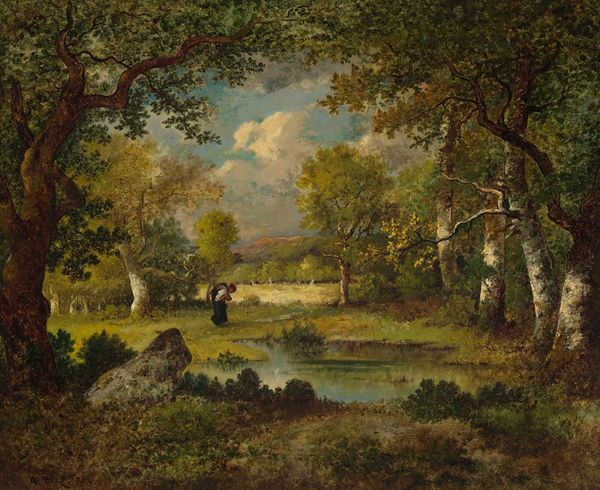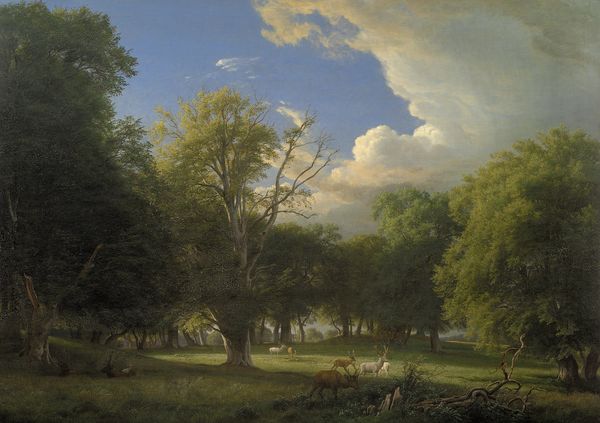
painting, plein-air, oil-paint
#
painting
#
plein-air
#
oil-paint
#
landscape
#
romanticism
#
history-painting
#
realism
Copyright: Public domain
Curator: Before us, we have "Landscape Looking Towards Sellers Hall from Mill Bank," a work crafted by Charles Willson Peale around 1818 using oil paint. The composition unfolds as a tranquil vista, doesn't it? What are your initial thoughts? Editor: It’s profoundly serene, yes. The canvas feels meticulously structured, almost staged. Notice the careful balance between the dense trees framing the left and the more open vista on the right. The artist seems to have controlled the vanishing point to guide our eye subtly towards the hall. Curator: Indeed. Considering Peale's multifaceted background, including his revolutionary fervor and museum endeavors, the composition carries significant weight. Look closely. Sellers Hall wasn't just a building; it symbolized industry, family, and enlightenment ideals—all visually anchored in a landscape painted en plein air. Editor: That context drastically alters my reading. The Hall becomes more than architectural detail; it is the focal point for interpreting visual organization, like a narrative through landscape. Observe how the light strikes specific points to subtly emphasize Peale’s vision for American progress and stability. Curator: Absolutely. This blend of history painting and plein-air technique serves as a symbolic act, unifying individual achievement and shared ideals, thus rendering what is commonly called realism as an aspiration rather than objective fact. Editor: And Peale cleverly manipulates this 'realism'. The palette is rather muted, but consider how he uses the pond in the foreground as a sort of reflecting device to almost double and frame, with those grassy details, a subtle yet powerful statement about mirrored realities and ideals. Curator: So true. By viewing Peale’s painting through the prisms of symbolic content, psychological associations, or composition structure, one is invariably prompted toward further exploration of cultural significance. Editor: By shifting my analysis to consider symbolism, that painting becomes not only picturesque but also intensely didactic, subtly projecting Peale's vision of society while seducing the observer to discover meaning through close examination of formal strategies. Curator: Truly, our shared viewing shows how varied readings amplify appreciation for an artwork’s complexity and value! Editor: Indeed, reflecting together reminds me of how form and content together generate richer understandings than one could extract alone.
Comments
No comments
Be the first to comment and join the conversation on the ultimate creative platform.
